Rogue Legacy is a side-scrolling action platforming RPG that tells the long-running story of a family cursed to explore a mysterious castle where the cure to any ailment, even death, is said to be hidden. I play as a succession of Heirs to this family’s legacy, each entering Castle Hamson knowing that all of their predecessors have met their demise within the dreaded fortress’ walls. Two things give new Heirs an edge: My ever-improving knowledge of the castle’s threats and skill at navigating them, and the growing power the family line accumulates using the riches pilfered during each expedition. The more I play, the less hopeless the next Heir’s quest seems, until at last they overcome all four wings of the castle and find the treasure at its heart that their family has fruitlessly sought for dozens or even hundreds of generations.
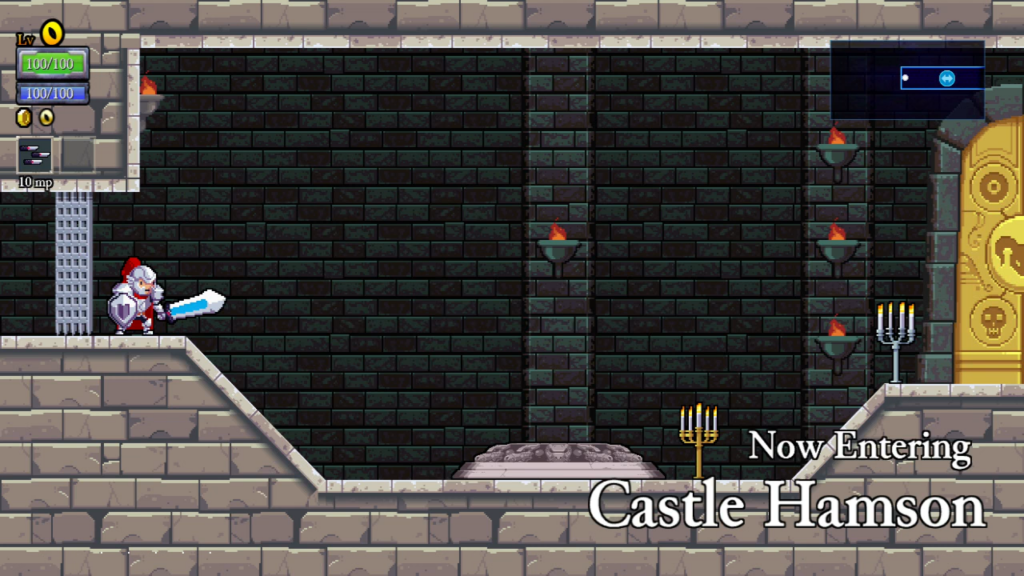
Stripping away its embellishments and complications down to the core, Rogue Legacy is an action platformer built on swordplay and simple magical projectiles. This is best exemplified by the player character, who despite their many incarnations as the latest Heir to their family’s legacy is always presented as a heroic caricature. Dressed in a full suit of knight’s armor and magisterial cape, they goosestep through the halls of Castle Hamson brandishing a sword high above their head as though they are leading a parade.
Each time I play Rogue Legacy, the newest Heir explores a version of Castle Hamson quite different in layout from the ones their predecessors visited. The treasure at the castle’s heart is not only protected by a barrier connected to the lifeforce of four mighty guardians, but also by randomizing the castle’s interior each time a new visitor crosses its threshold, ensuring that no map may be created to reveal its secrets.
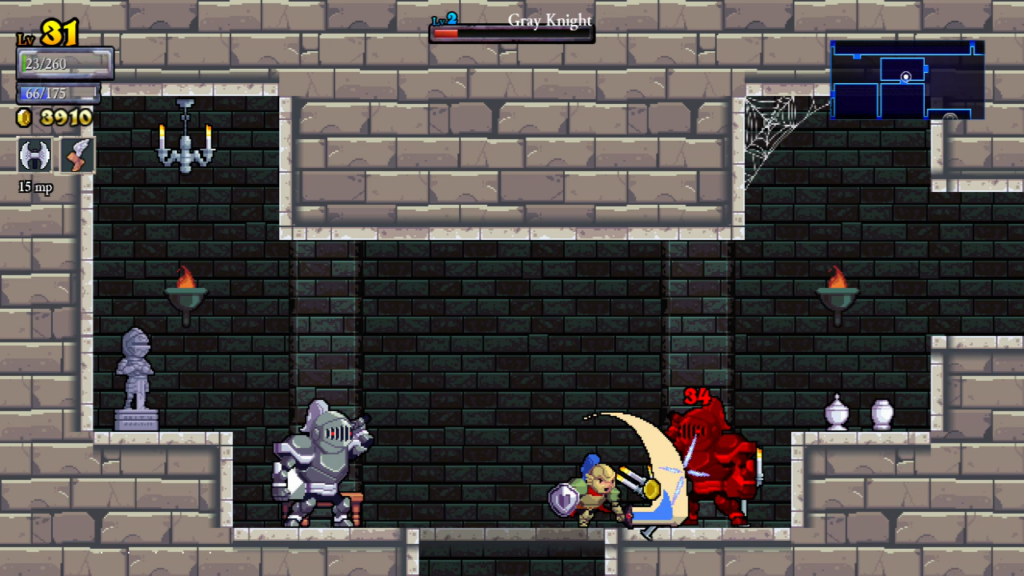
Though the precise configuration of the castle’s rooms changes with each visit, the hazards within them are consistent. Hulking knights with glowing red eyes visible behind their shadowed visors stomp around the castle’s hallways, the weapon they wield determining their attack pattern. Knights are often complemented by diminutive wizards that float through the air and cast spells elementally aligned to the color of their cloak. Wolves hunt in the forest bordering the castle’s far side, hovering skulls flood the screen with lines of fire in the tower, and demons hurling ninja stars lurk in the dark corridors of the dungeon.
Monsters are the most obvious threat, but often not the most immediate one. Whoever crafted Castle Hamson’s constantly reconfiguring rooms and hallways also filled those spaces with deadly traps. Fireballs and arrows burst from holes in the walls and ceilings. Some floors are lined with vicious spikes. Others are fitted with recessed spikes that only erupt when the Heir steps upon them. What makes traps more devious than monsters is they can never be neutralized. Any monster may be permanently defeated with swings from the Heir’s sword and casting of their spells. Traps are omnipresent and invulnerable; they are always a threat.
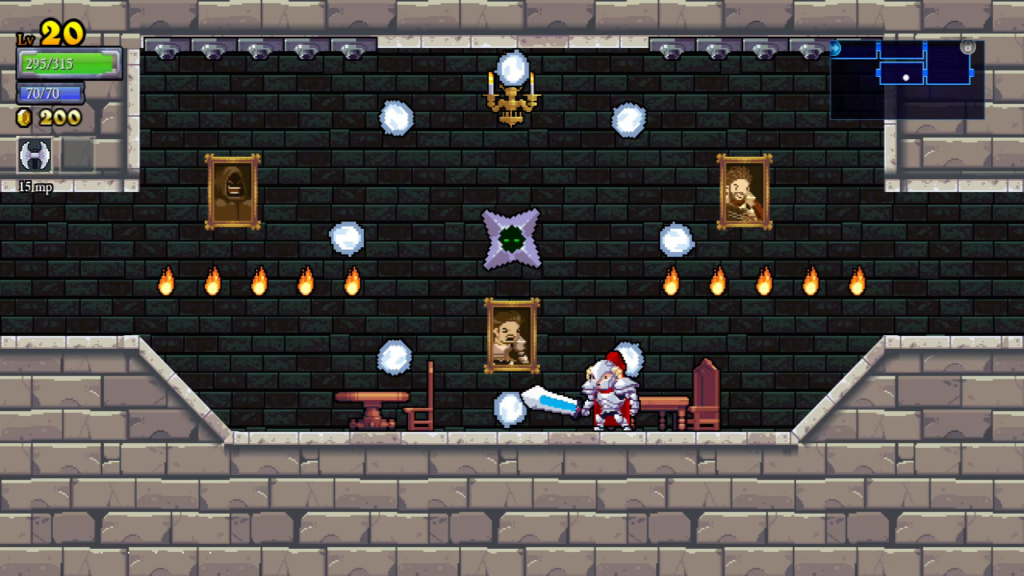
Often, monsters and traps in a room will complement each other. Monsters will try to lure the Heir into range of traps while traps simultaneously try to box the Heir in with the monsters. Sometimes rooms go to extremes and contain so many traps that it contains no monsters, or so many monsters it contains no traps. In any case, the flurry of melee weapon swings from knights, magical spells from wizards and evil familiars, and spikes, fireballs, and arrows from traps turn almost every room into a gauntlet of precision platforming that demands my undivided attention at all times if the Heir is to survive.
Inevitably, the current Heir will die. When this happens, all progress through the current castle is immediately lost. I am taken back to the title screen and must choose a new Heir who will explore a new version of Castle Hamson in the hopes they will have more success than their predecessors. I choose from among three new potential Heirs when I begin a round and not every one is identical. Each comes with randomized attributes that subtly or drastically change how they function as a player character.
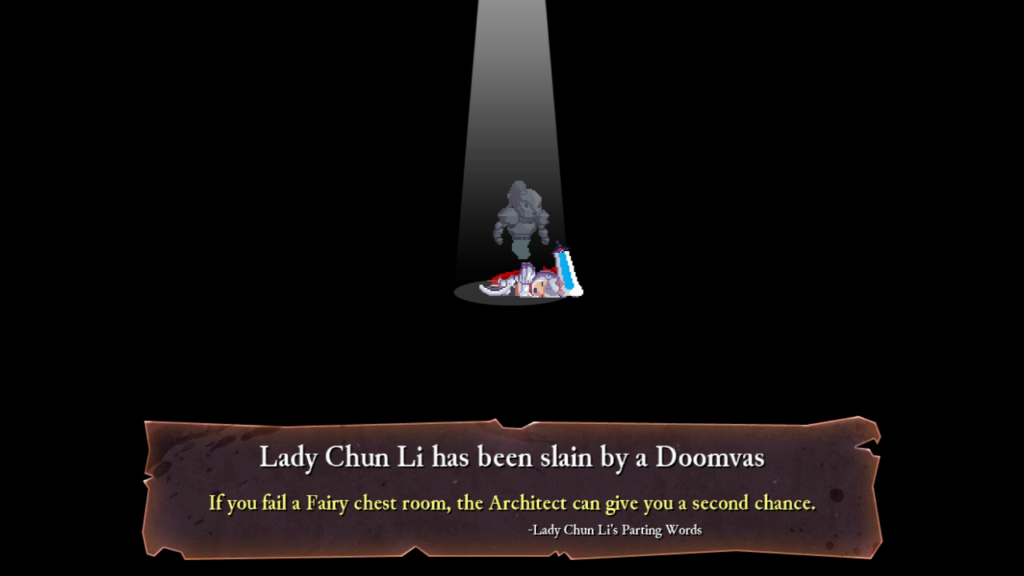
The most obvious variation is the Heir’s class. Knights are the baseline, with no notable strengths or weaknesses. Every other class functions off statistical tradeoffs. Barbarians have increased health, but deal less damage and have smaller mana pools to cast their spells. Mages are the opposite; they have larger mana pools and their spells are more damaging, but their sword blows are comparatively weak and cannot take many hits before they die.
Other classes are much more mechanically complex. Spellthieves are even weaker than Mages, but they regenerate mana with every strike from their conjured swords, allowing them to use their empowered spells much more often. Shinobis are frail and have weak magic, but they move faster than other classes and have abnormally high physical strength. Liches are the most unusual class. They begin with fewer hit points than other classes, but their total increases with every monster they defeat. A Lich Heir who diligently hunts down every monster in every room of the castle will begin their run with one of the lowest hit point counts of their lineage and end it, whether by death or by victory, with one of the highest.
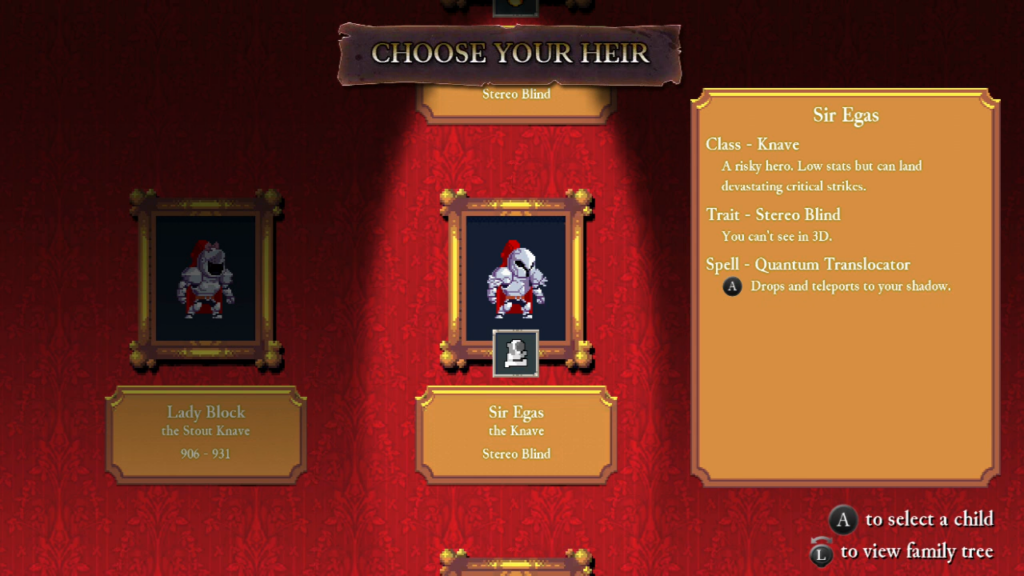
An Heir’s class is their most impactful factor, but every one carries with them additional traits that change up my play experience. Their gender presentation is cosmetic, as it should be. Other harmless cosmetic traits include baldness, which removes the feather from the Heir’s helmet, nostalgic, which tints that play session with a sepia filter, and gayness, which changes their partner’s gender in the ending, should the Heir should reach it.
Other traits are felt more significantly. Heirs with dyslexia see all text with scrambled letters, including all dialog appearing in non-player character’s speech bubbles. Some Heirs have a condition called Congenital Insensitivity to Pain, or CIP, which hides the hit point meter on the interface. The vertigo trait is outright malicious. It flips the entire world upside down and reverses the Heir’s controls to match. Any Heir with the vertigo trait is immediately discounted as a choice unless I’m looking to challenge—or punish—myself.
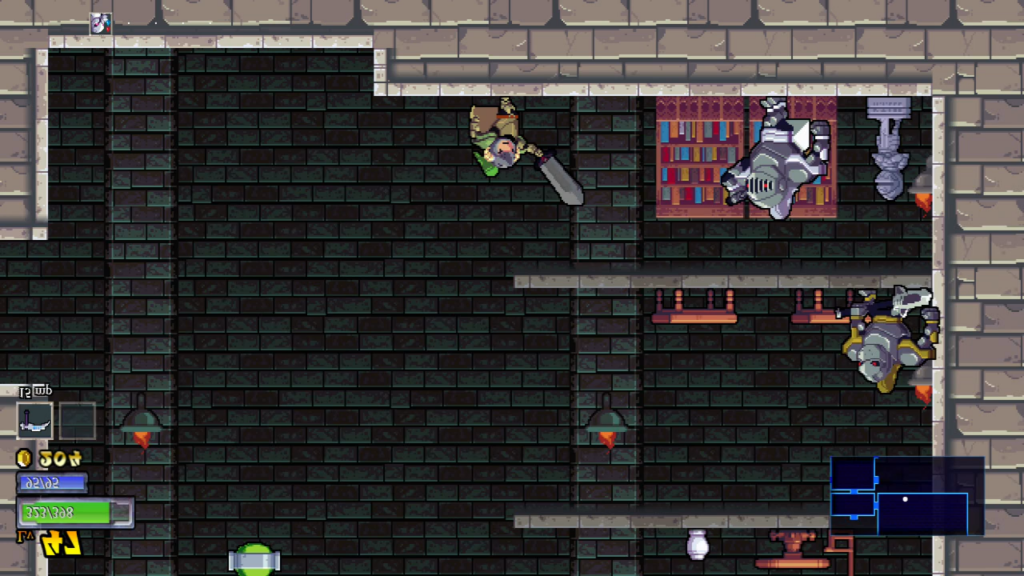
With a randomized combination of classes and traits, each new generation of Heirs can produce wildly divergent combinations. Sometimes a generation produces classes whose strengths clash with their traits. Sometimes a generation contains nothing but negative traits. Sometimes I just have to accept that a poor choice pool means the next Heir won’t have a very successful visit to Castle Hamson and I’ll have to hope for better luck from the next generation.
Once I have chosen a new Heir, they are not immediately cast back into Castle Hamson. Through some magical twist of fate, all the gold which the previous Heir prized from defeated monsters, looted from treasure chests, and found hidden inside the castle’s many destructible objects is delivered to their family. Before an Heir enters the castle to their own certain doom, they are allowed to spend this largesse to expand the family manor.
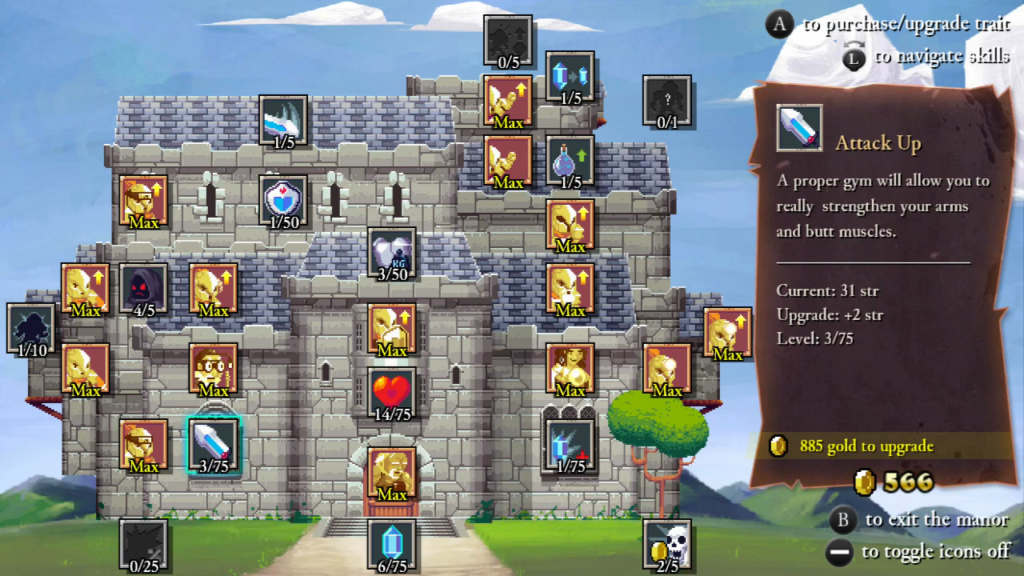
More than just a vain expression of the family’s accumulated wealth, the Manor is a visual representation of each Heir’s strength and vitality. It begins as a simple tower. Successive generations build onto it, and each new wing and decoration corresponds to one of the Heirs’ statistics. Building and improving the central tower increases the Heirs’ hit point totals. Adding a new wing to the left side of the tower opens upgrade paths that improve the Heirs’ melee damage and critical hit rates, while adding a new wing to the right side opens upgrades for magical damage and mana pools. Additional parapets, turrets, and decorative elements confer more unusual and unexpected bonuses.
Upgrades enabled by the Manor for the Heirs are dramatic and necessary. The first Heir is unlikely to survive more than the first few rooms of their visit to Castle Hamson. Putting what little gold they can scrounge together into improving their progeny’s hit points and attack damage helps them push a little further on, and then further still, and so on. With every upgrade, an Heir has a better chance at progressing further than their predecessors and finding still more gold. Their inheritors need these greater returns as the Manor’s upgrades grow exponentially more expensive the more are purchased.
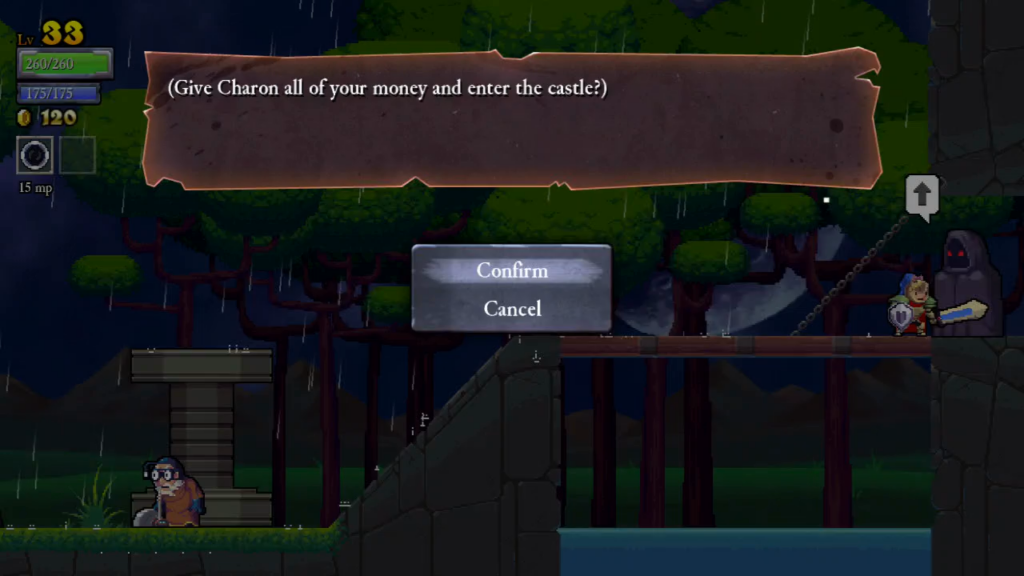
There’s no sense in saving money over multiple runs. Charon, the gatekeeper of the dead, guards the entrance to Castle Hamson and confiscates any unspent gold from the Heir before they enter. If I want the most expensive Manor upgrades, I need to make sure the next Heir scrounges all that gold together in a single run.
Money may be spent on more than just improving the Manor. Before entering Castle Hamson, an Heir passes through a courtyard outside. After purchasing certain Manor upgrades, this courtyard hosts a Blacksmith and an Enchantress who sell additional upgrades. Unlike the Manor’s upgrades, which affect all Heirs at all times, the upgrades provided by these artisans allow me to further customize the player character before they enter the Castle.
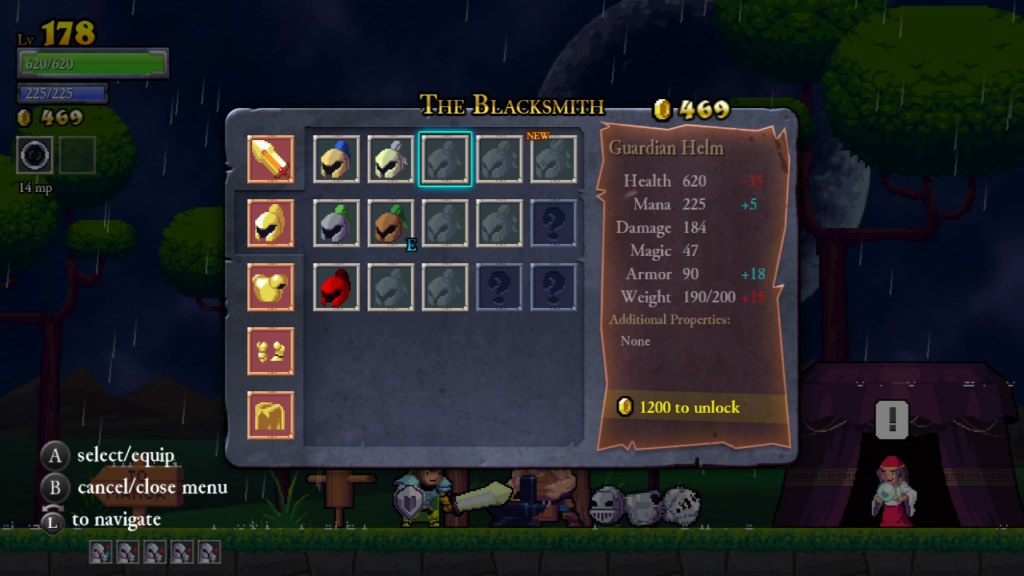
The Blacksmith sells weapons and armor. While it’s tempting to load up the current Heir with the most damaging sword and the most defensive armor possible, leaning into their class’ strengths by equipping a magic-boosting cape to a Mage and a strength-boosting sword to a Shinobi often yields better results. The Enchantress offers more interesting customization options. Her runes can potentially increase the Heir’s running speed, allow them to jump multiple times in the air, float, or even recover health and mana with every monster killed.
Before an Heir can spend gold on an artisans’ upgrades, one of their predecessors must first discover that upgrade within Castle Hamson. The Blacksmith’s blueprints are found in chests which can appear almost anywhere. The more I play, the more Blacksmith upgrades the Heirs will inevitably discover.
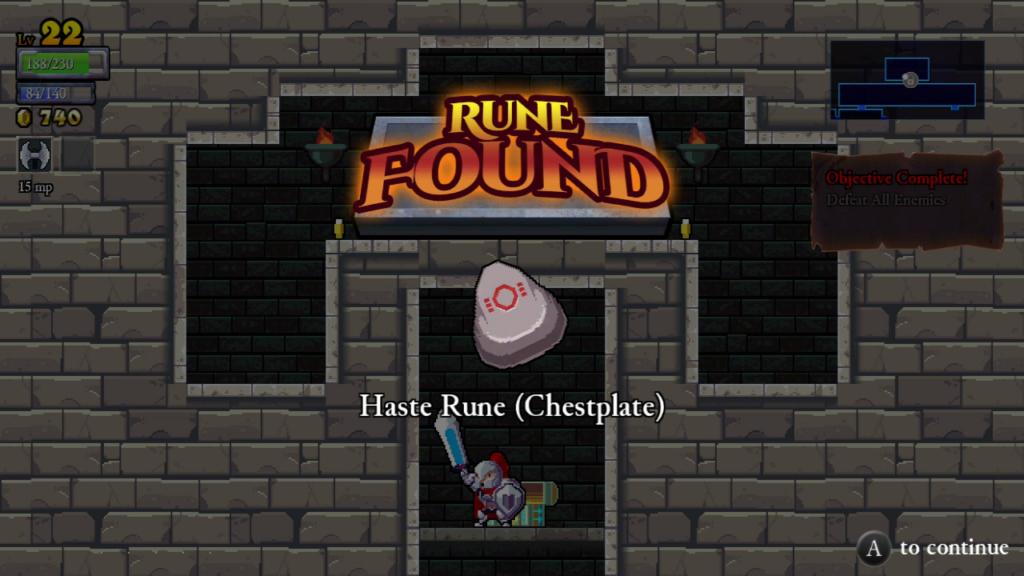
The Enchantress’ runes require more skill. A few rooms in every castle configuration are outfitted with a magically sealed chest. This chest only opens when the Heir completes a challenge unique to its room, such as defeating every monster within the room, reaching the chest within a time limit, or reaching the chest without getting hit. Many of these challenges are tests of pure ability. A few are challenges of circumstance; some chests are simply impossible to reach unless the current Heir happens to possess a particular trait, magical spell, or combination of runes. There’s no way to know in advance what these requirements may be. If the Heir encounters a sealed chest and lacks the tools to reach it, all I can do is shrug and hope for better luck next time.
Finding every Blacksmith blueprint, every Enchantress rune, and fully upgrading the family’s Manor is how Rogue Legacy entices me to keep coming back for more. Long after I have unsealed the door at the castle’s heart and claimed the family’s legacy, I will still be working to complete these long-lasting goals.
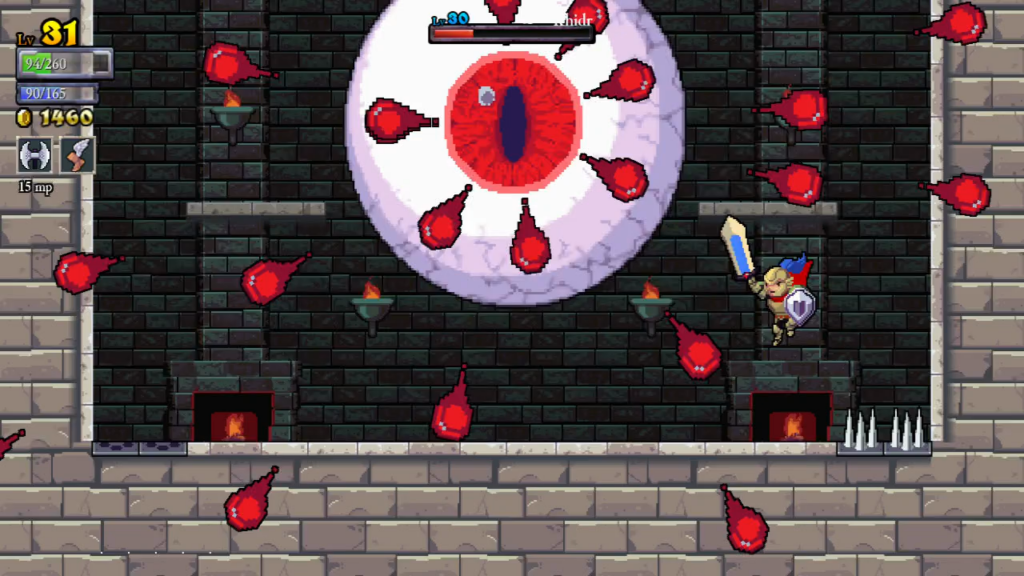
Rogue Legacy’s has one final twist for longevity. Upon defeating the four guardians protecting the castle’s treasure and claiming it for the family, I immediately enter the Legacy Plus mode. This resets the entire castle back to its original state and fills its rooms with even more powerful monsters and a denser array of traps. When the heirs once again claim the castle’s treasure, Legacy Plus resets again, and then again, and on into infinity for however many times I can finish it.
In contrast to the Manor, which can eventually be capped out through a great deal of effort, there seems to be no end to how high Legacy Plus can continue. Monsters inevitably grow beyond the Heirs’ strength. This ensures there is always a challenge waiting for me when I sit down to play, but it does create a sense of discouragement in the long term. Once the Manor is capped out, starting a whole new game with a fresh Manor is more appealing than continuing to struggle through successive rounds of Legacy Plus.
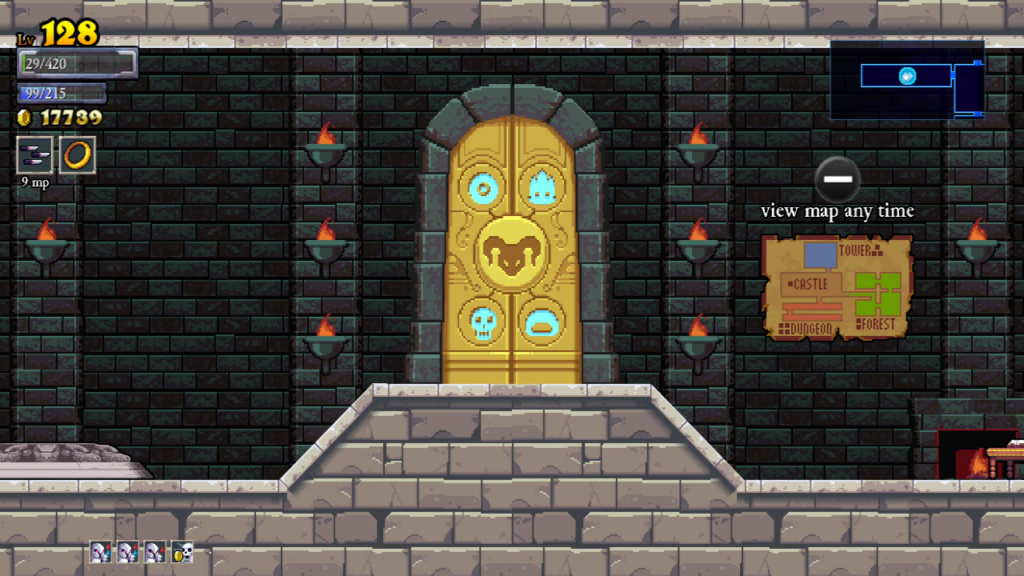
Rogue Legacy is an influential addition to the so-called “roguelite” genre of indie RPGs, and it’s easy to see why. Its simple and challenging action-platforming design is paired with an appealing loop that rewards effort without discounting challenge. The first few Heirs have a rough time in Castle Hamson’s earliest rooms, but sacrificing their lives in desperate efforts soon earns enough money to develop the family Manor, ensuring their successors have the strength to overcome those challenges. Those same successors then encounter the same problem in the next wing or the next round of Legacy Plus. This loop remains enticing until the Manor is capped out, all the Blacksmith’s and Enchantress’ upgrades have been discovered, and Legacy Plus creates monsters too difficult to be satisfactorily killed. This takes many, many hours of play to happen, and the experience remains tight and excellent the entire time. Rogue Legacy’s loop is foundational in current indie videogame design philosophy and should be played for that reason alone.